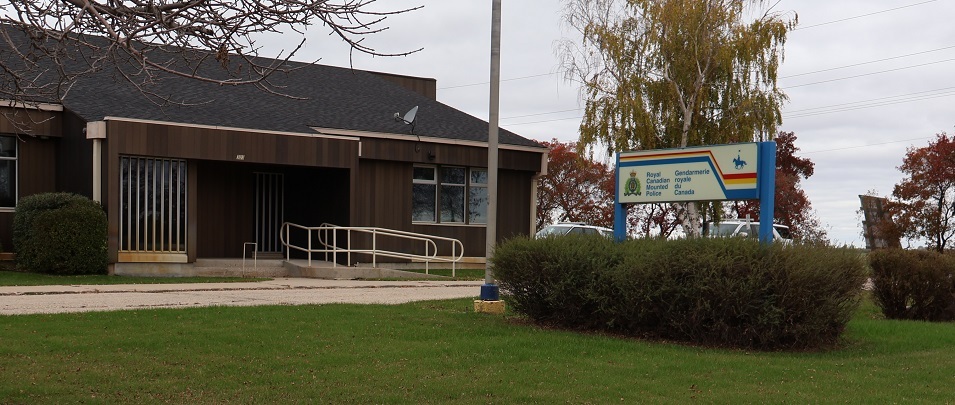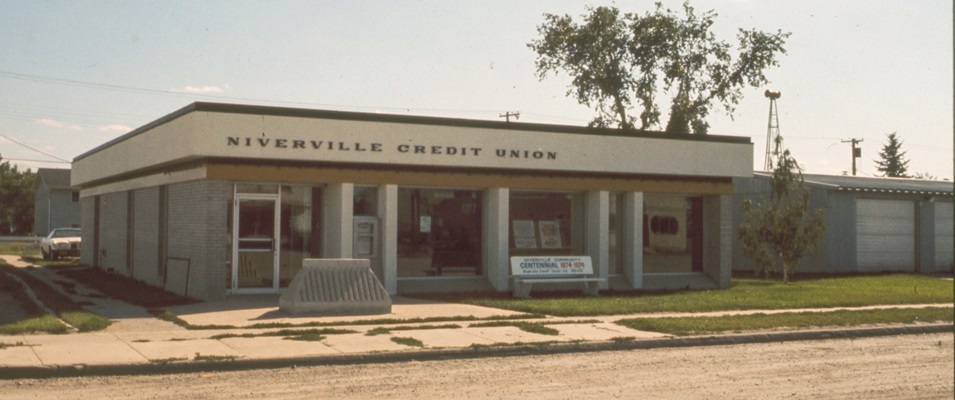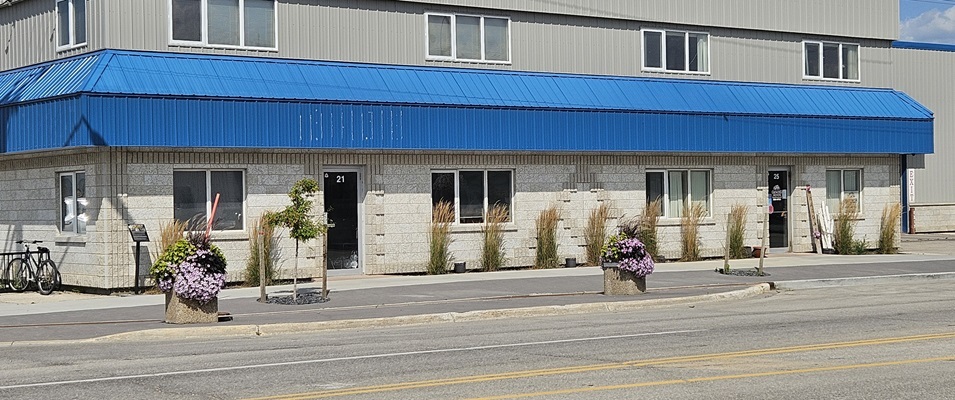
This past May, a collection of Grade 10 students from Niverville High School (NHS) invited Mayor Myron Dyck to join them for a roundtable discussion on food sustainability. Their goal, after completing a multiweek project, was to make their pitch to someone in a position of power who could implement solutions to this rapidly growing environmental concern.
At the start of the project, teachers asked each study group to choose from a broad scope of topics related to modern food and farming practices which have resulted in the food and waste mismanagement that is common all over North America today.
“This is only our second year doing this project,” says teacher Julie-Anne Krcadinac. “We wanted to develop it to involve a lot of student choice [so that] it became a lot more authentic to the students.”
This year’s students decided to focus on disruptions to the food distribution process, current farming practices that deplete nutrients in the soil, and issues with the way food waste is viewed and managed.
At the end, they were tasked with presenting manageable solutions to all the issues they researched.
“The essential question that we were looking at is, ‘How can we make sure that the entire world is fed in a sustainable way?”’ says teacher Jessica Neuendorff.
Neuendorff adds that, according to research, enough food is already being grown to feed the planet’s entire population. The students, she says, set out to determine what is disrupting food from reaching its maximum potential.
Food Disruption
First, the students took a close look at the farming practices used in North America over the years. Soil tillage has long been a practice employed by farmers to control weeds and pests in preparation for seeding.
“Intensive soil tillage can increase the likelihood of soil erosion, nutrient runoff into nearby waterways, and the release of greenhouse gases into the atmosphere,” says a paper released by the U.S. Department of Agriculture. “A reduction in how often or how intensively cropland is tilled enables the soil to retain more organic matter, which leaves the soil less susceptible to wind and water erosion and helps store or sequester carbon.”1
To help back those claims, students studied the “dust bowl” conditions of the 1930s, an environmental catastrophe exacerbated by industrial farming practices that failed to consider the complex role that natural vegetation, wildlife, fungi, and soil organisms play in water retention and soil and atmospheric health.
The result was some of the hottest summers on record and the desiccation of millions of acres of farmland, leading to intense dust storms that threatened human life, damaged ecosystems, and caused additional economic hardship during the Great Depression.
While the agricultural industry has learned much from that debacle, the NHS students say that more can be done.
“The disruption is in the soil itself and the environment that we’ve created,” says NHS student Emma. “Back in the day, they used to till the land so badly that it went from soil to dirt, which is not the same. Soil is healthy and dirt has no microorganisms in it. We end up killing the [microorganisms] from overtilling and overfertilizing.”
At the same time, students dived into the role of natural carbon and nitrogen cycles to better understand how they impact soil health.
Put simply, both carbon and nitrogen are part of a constant natural cycle, travelling from the atmosphere into the soil through plants where they are used and then, eventually, released back into the atmosphere.
Research shows that some farming practices, like the overuse of fertilizer, can offset the balance of nitrogen in the soil and pollute groundwater or nearby water sources via runoff.
While plants and soil microbes make healthy use of carbon pulled from the atmosphere, probably one of the most important roles healthy soil plays is by warehousing a lot of broken-down plant matter which, in turn, houses carbon stores for very long periods of time before it’s released back into the atmosphere as carbon dioxide.
“Globally, soils contain more than three times as much carbon as the atmosphere and four and a half times more carbon than the world’s biota,” reads a study by the U.S. Global Change Research Program. “Therefore, even small changes in soil carbon stocks could lead to large changes in the atmospheric concentration of CO2. Despite their importance, however, stocks of soil organic carbon… have been depleted through changes in land use and land cover and unsustainable land management practices associated with agriculture, grazing, and forest management.”2
But how does all this matter in terms of food disruptions?
The students say that when unhealthy growing conditions occur, it can result in poor crop outcomes, and eventually a shortage of nutritional food sources.
One resolution to the problem, they conclude, would be to allow agricultural land more time to lie fallow so it can naturally rebuild its microbiome.
To do this, the students investigated hydroponics, a form of indoor vertical farming that uses non-soil growing mediums and eliminates the need for pesticides.
Food Waste
Another topic the students explored was food waste, which they say plays an enormous role in the disparity between food distribution in first-world and developing nations.
“We talked about how grocery stores will throw away perfectly good food because of best before dates on packaging,” says NHS student Ella.
According to an article in The Daily Meal, consumers have confused best-before dates with expiration dates. There’s a big difference between them. Best-before dates address the date by which manufacturers conclude that the product may begin to lose some quality, but it is not a solid indicator as to its safety.
“In reality, best-before dates only relate to quality and not food safety,” says food scientist Gary Sandberg. “Although your refrigerator and pantry may be filled with items that have passed their best-before dates, that doesn’t mean that they are no longer safe for consumption.”3
Ella believes that the best way to deal with this on a commercial level is to change regulations that currently prevent restaurants and grocery stores from donating their “past due” products or excess food to shelters and foodbanks.
But NHS student Jake feels it will take more than regulatory changes to make that happen. He believes government incentives may be needed.
“It’s more cost effective for [grocery stores and restaurants] to just throw it out,” Jake says. “They’d have to pay for the [transport] to get it to places that need food. They’re a business. They are there to make money.”
Emma agrees, but she adds that food waste is an issue in every household as well.
“A big part of the problem is that people buy it and then it never gets used because people buy more than they need,” says Emma. “Even at my house… it gets stuck in the back of the fridge or the pantry and you never end up using it.”
She adds that consumers need to be far more calculated and conscientious when filling their grocery carts, taking only what they know they’ll use.
In the end, Emma says, it’s a hard message to sell them on when they are fooled by what appears to be food abundance down every grocery store aisle and at the fast food restaurants on every corner.
Jake concludes, though, that a zero-waste target is unrealistic. For this reason, communities need to take a hard look at more sustainable means of organic waste management.
“Here in Canada, 2.2 million tons of food waste happens each year, and this is costing our government $17 billion each year,” adds NHS student Zach, who indicates that the cost is primarily a factor of garbage collection, transport, and landfill management.
The students agree that improving the community’s composting site to accept all food waste would be the initial answer to the problem. Secondly, providing each homeowner with a green bin that’s put out for pickup on garbage day would incentivize residents to sort through their compostables.
According to the U.S. Food and Drug Administration, wasted food “is the single largest category of material placed in municipal landfills.”4
And the students say that redirecting food waste from the landfill to the compost site will have positive environmental impacts as well.
According to Recycle.com, both landfills and compost sites produce CO2 emissions. But 50 percent of the gasses coming from a landfill site are actually methane which can hold 25 times more heat than CO2 and is almost 300 times worse for the environment than CO2.5
This is because compost undergoes aerobic decomposition—in other words, it uses oxygen—whereas the practice of burying waste deep within a landfill site starves the waste of oxygen and instead produces methane.
“After covering this topic, it made me realize that we should care about stuff like this,” Zach concludes. “In the past, I thought it was a little issue. But now I realize that… it’s a bigger issue and I should pay attention.”
All the students agree that the time to initiate change is right now and education is the key to making that happen. Staying on the current trajectory, they say, could be devastating.
“It would be horrible, because the population’s going up,” concludes NHS student Mason. “And if food starts to decline… we’re kinda done for. It won’t be good.”
“When I first started the project,” says Emma, “I wasn’t aware that soil could make such a big difference. And I think a lot of people don’t [understand this], so we’ve just got to bring more awareness to it. This is our world and we’ve only got one.”
At a public meeting following the roundtable discussion, Mayor Dyck told council that he was moved by the level of knowledge these students had gleaned from their research.
“Every time I leave the high school, I have a smile on my face,” says Dyck. “Those young people are smart as whips.”
He did not indicate how council might choose to respond to these concerns.



















